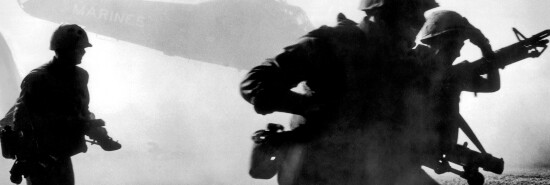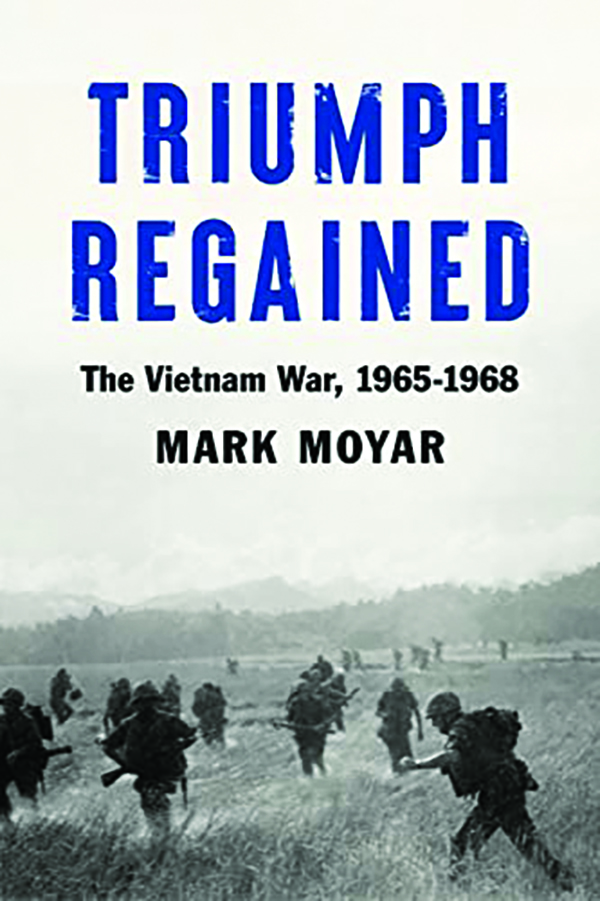
The eternal reexamination of Vietnam
Avi Woolf
In 2006, historian Mark Moyar, with whom I have collaborated on the subject, published the first volume of a planned revisionist history of the Vietnam War, to much fanfare and controversy, titled Triumph Forsaken. Marshaling not only American sources but a wealth of published North Vietnamese accounts and memoirs, Moyar argued vigorously that American support of South Vietnamese leader Ngo Dinh Diem was sustainable and necessary to prevent a then-aggressive Chinese and Vietnamese communist march down Southeast Asia and turn one of the most populous global regions red. The American decision to allow Diem to be killed in a coup and replaced with a junta of generals was thus a near-fatal error that almost lost Vietnam and the whole region to communist aggression.

Even when reading it and generally agreeing with his thesis, I could not but wonder whether Moyar was undermining his own argument. If Diem was so indispensable, then the United States was effectively betting its entire policy in the region on the survival and rule of just one guy. What if Diem, instead of being killed in a coup, had been hit by a bus? Or died of cancer given his smoking habits? Would history have really unfolded that differently?
In a way, Moyar’s second volume, the product of 15 years of research, tries to answer that question, making the argument that either way, the U.S. and South Vietnam could have come out on top and indeed did come out on top by the time Richard Nixon replaced Lyndon Johnson in the White House.
If the first volume was a much more bird’s eye view book, focusing on the grand strategic importance of Vietnam in the region and the political character of South Vietnamese society, the second volume is much more a nuts-and-bolts military history, replete with detailed battle descriptions including unit numbers, weapons types, and casualty lists.
The gist of it is this: The story of the war in this period was overwhelmingly one of bloody conventional warfare between two very well-trained and equipped forces, the U.S. Army and the North Vietnamese Army, in which the former had a decisive advantage in heavy air and artillery firepower to get it out of the occasional jam or mishap. The popular image of the Viet Cong dominating the story doesn’t fit here, as American military leaders considered them a secondary concern compared to the country being conquered outright. The South Vietnamese forces also play a generally secondary role in this volume, as poor leadership and less sophisticated equipment forced them to play second fiddle to the U.S. until the end of this volume.
Moyar makes a point of how Vietnam was very much a war driven by patriotism for the U.S., often emphasizing high levels of popular support for the war and the high level of volunteering to serve and pride in doing so. His emphasis on the storied World War II combat records of many of the midlevel and senior commanders is a clear effort to tie the two together with one bow, contra the view that ‘Nam was something to be forgotten or regretted in the record. There’s even a lot of quoting of the unapologetic religion of the soldiers during battle.
By the end of the famous 1968 Tet Offensive, the U.S. Army and South Vietnam were actually in a far better position than at the start. Despite political meddling by the Johnson administration in the use of different weapons and targeting of particular areas, North Vietnamese forces, both guerrilla and regular, had shattered themselves in a vain attempt (indeed three vain attempts) to seize the whole of South Vietnam’s population centers. The South Vietnamese were emboldened to fight and clear out what was left of the enemy, and a new hard-line anti-communist named Richard Nixon was about to enter the White House.
Things were not all roses, of course. Moyar is frank and even clinical in describing all the efforts of dovish elements in the Johnson administration to sabotage the war effort in the name of a quick peace, an effort aided by willingly gullible national reporters and academic elites who fell for enemy propaganda and misleading atrocity reports. Popular support went up and down in frustration with Johnson’s yo-yoing and even concluded that the original decision to send in the troops was a mistake, even if they wanted to see things through to victory now.
While a convincing case militarily, Moyar’s book suffers from a number of vital lacunae. In the first volume, Moyar made the convincing argument that the region was shaky enough that losing Vietnam might indeed have lost the whole region. But by 1968, China was looking inward, Indonesia was ruled by anti-communist generals in firm control of the region, and North Vietnam was feuding with both communist powers. It’s not entirely clear that America holding the country with almost half a million men was so vital for its global interests, aside from the importance of national honor and ensuring a Korea-like peace.
Speaking of, this seems to me one of the clearest cases of wishful thinking in the book. Nowhere — not in intelligence assessments, political statements, or indeed post-war North Vietnamese material — does Moyar show that there was any interest at all in anything but total victory over South Vietnam. Militarily incompetent they may have often been, but the North Vietnamese leadership knew how to keep its cool even under terrible military pressure and yield not an inch. Perhaps the next volume will show such openness, but it is not here.
There are other problems. The story of South Vietnam’s political and even military development deserved much more than an occasional passing mention. This was, after all, their story and their country, which they would ultimately have to defend, and I would have gladly forgone some U.S. Army battle detail to get another deep dive like the one Moyar provided in his first volume. The same goes for race relations in the U.S. Army, which might have been better than we thought, but his case needs more depth than a New York Times series and a few polls. The evolving of Republican thought during this era also strikes me as important given that party’s ascension to the White House in the end.
All told, though, this is a welcome and important contribution to a proper understanding of the war from an unabashedly pro-American, though not hagiographic, perspective. It was a pleasure to read, and I look forward to the next volume to see, presumably, how and why triumph was once again lost, to the detriment of the South Vietnamese, American society, and its historical and political memory.
Avi Woolf is an editor and translator. He has been published in Arc Digital, National Review, the Bulwark, and Commentary.
